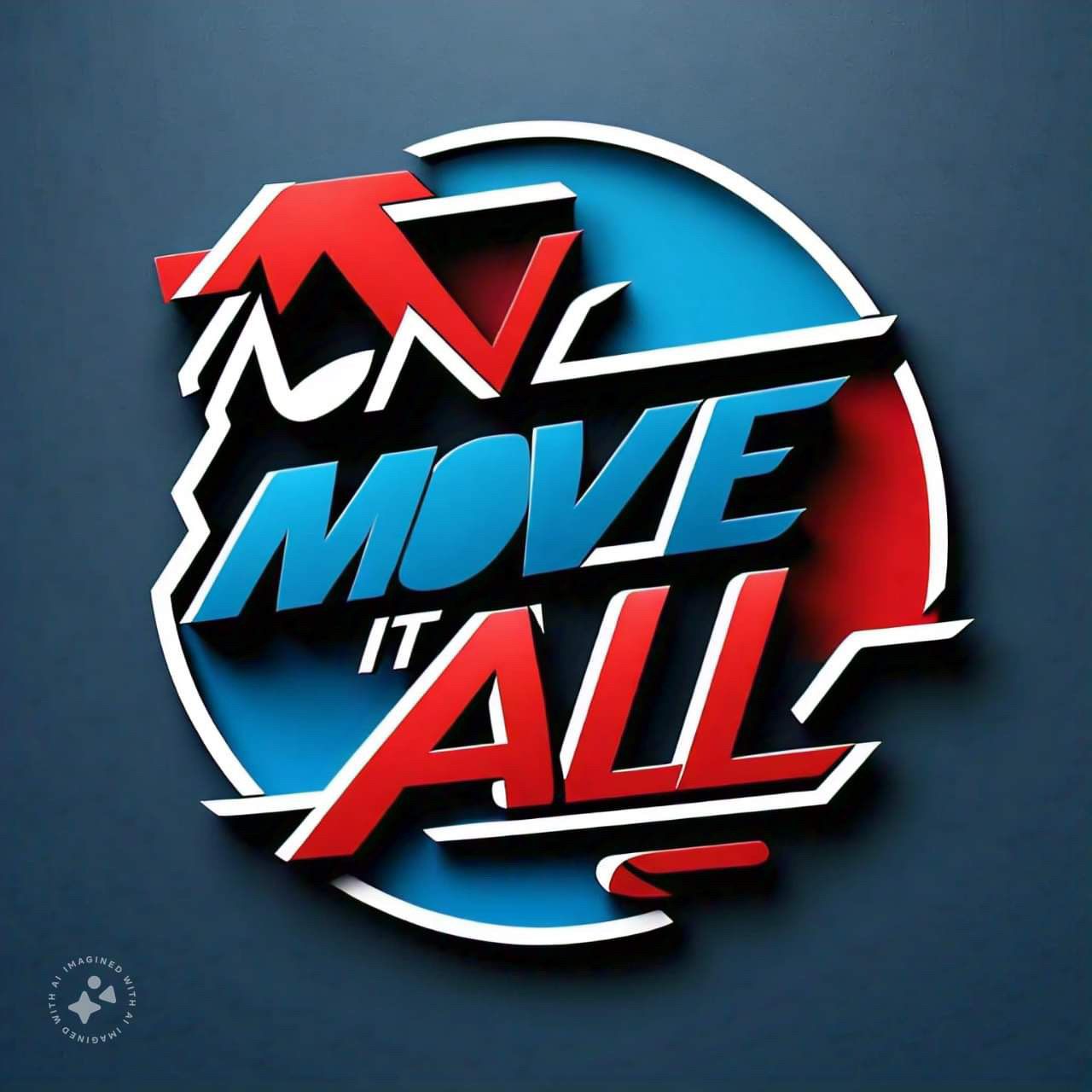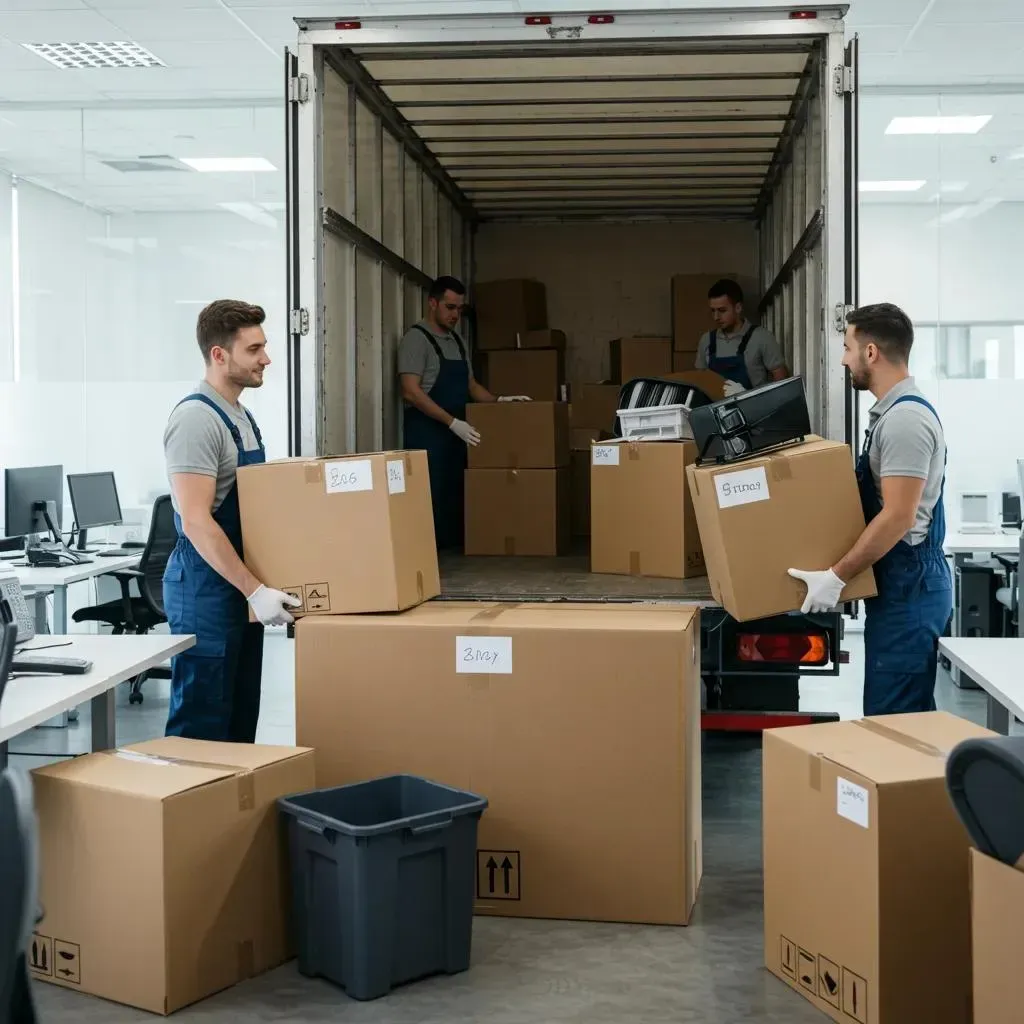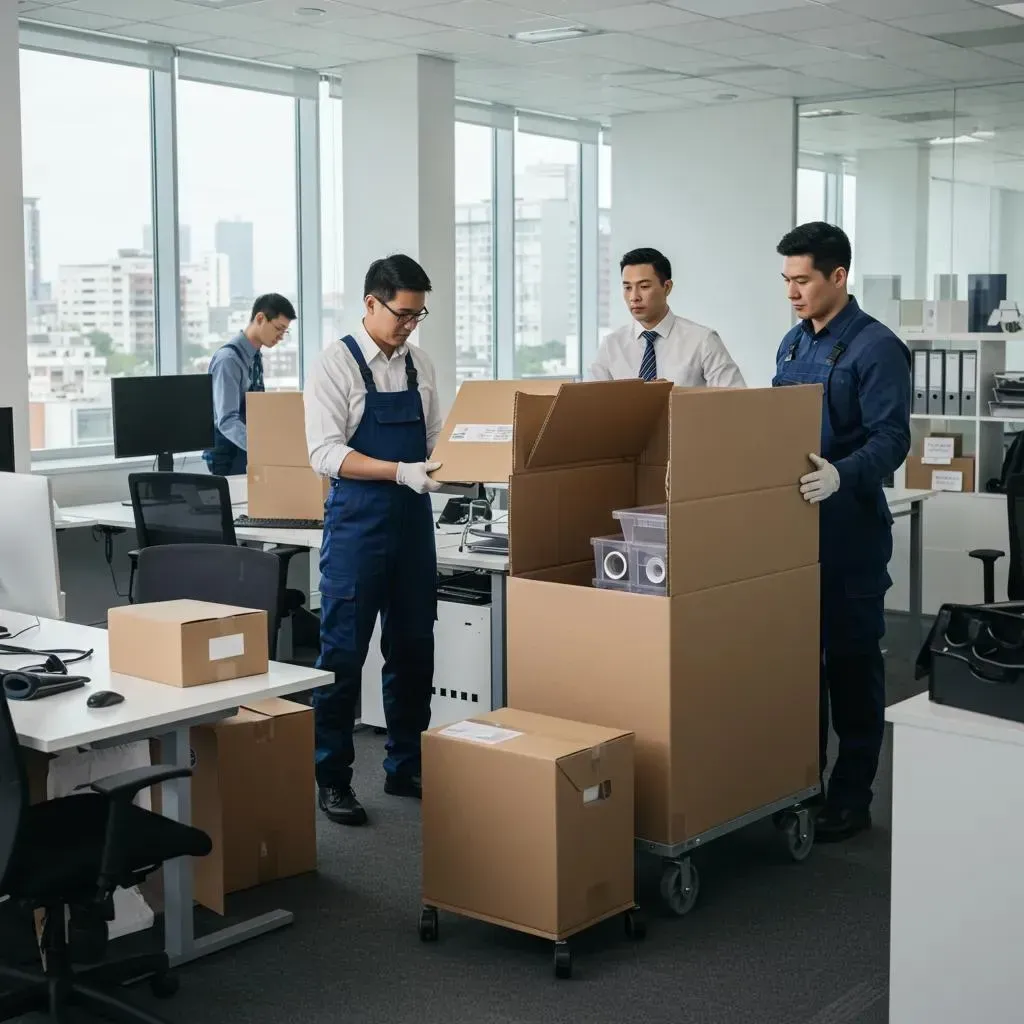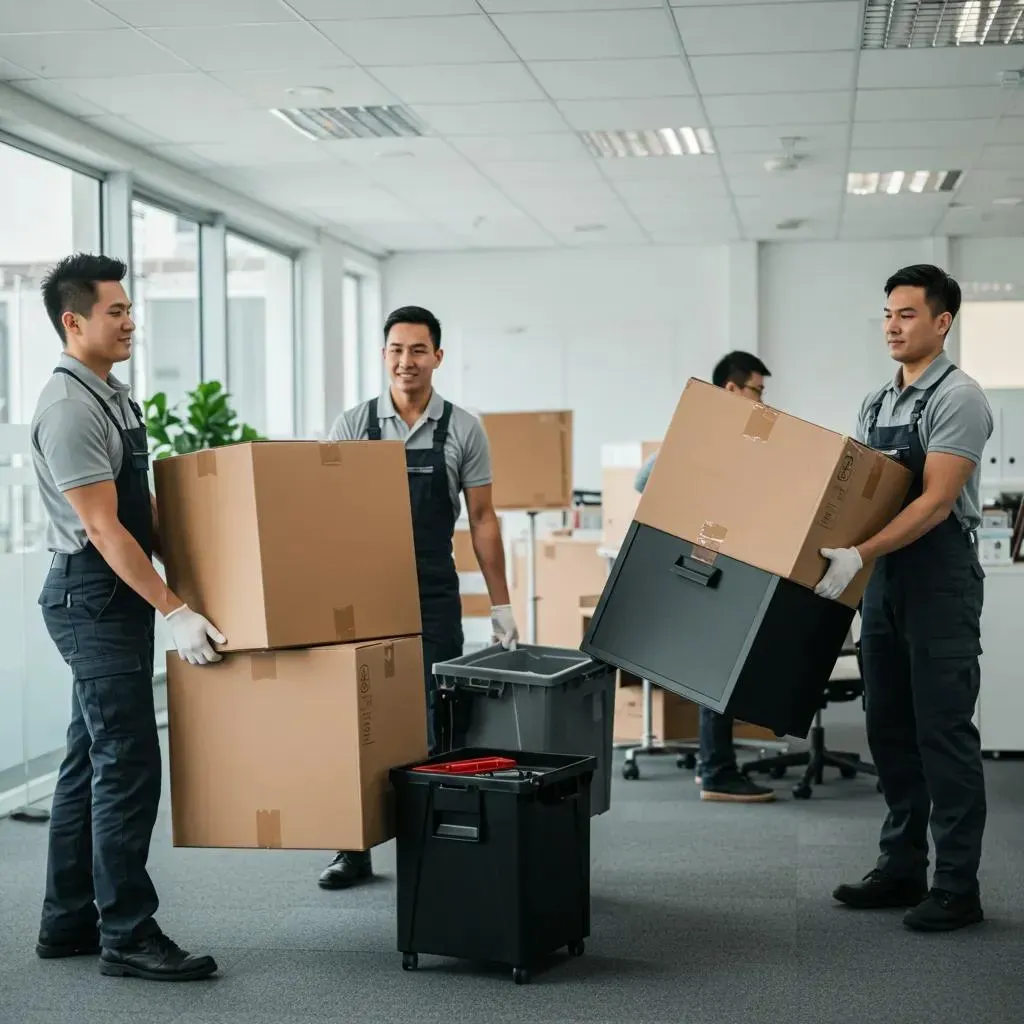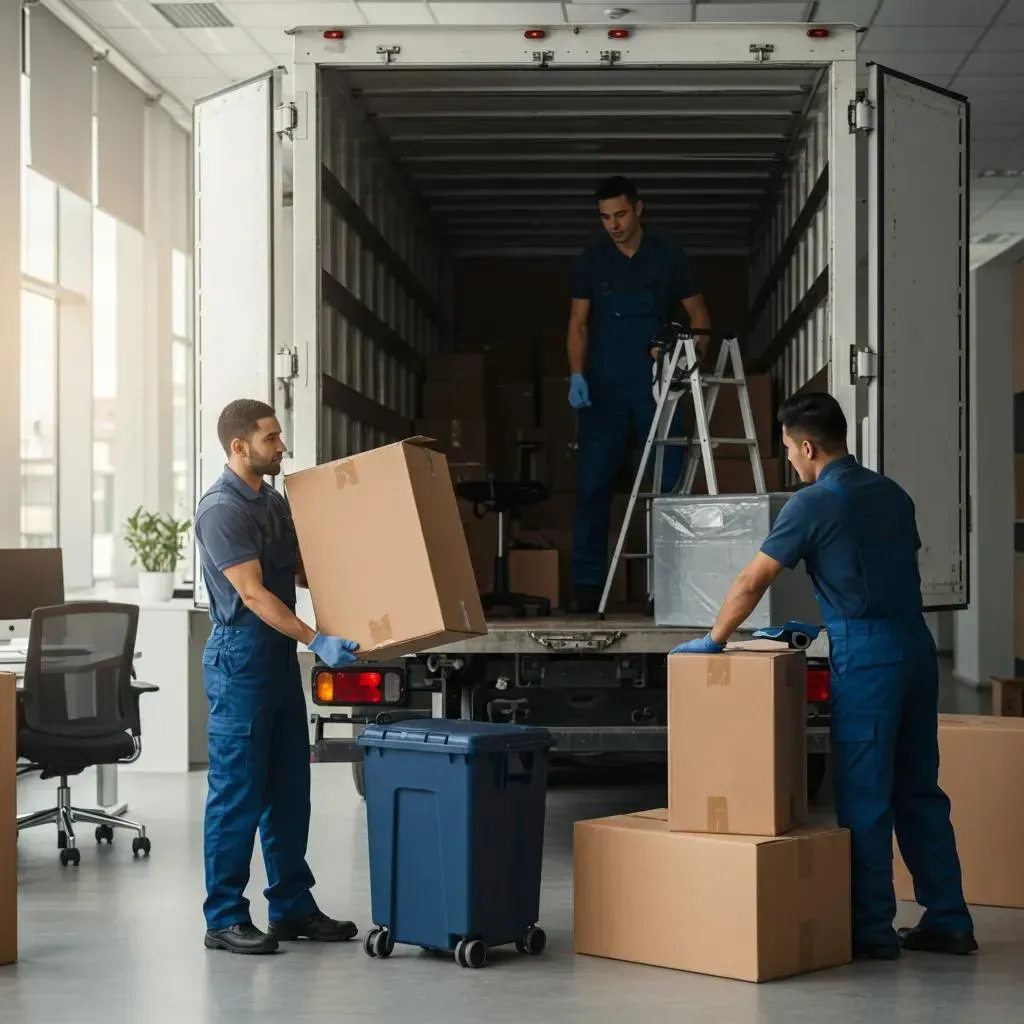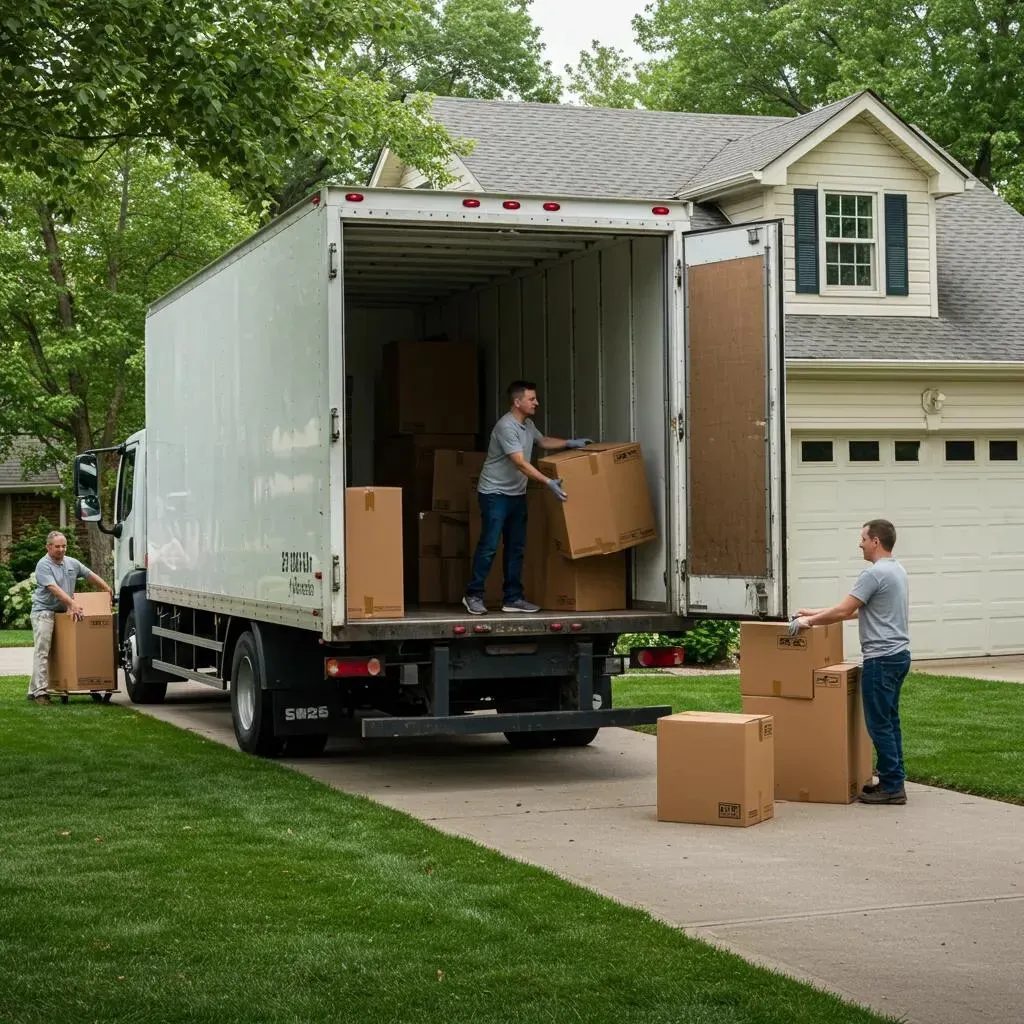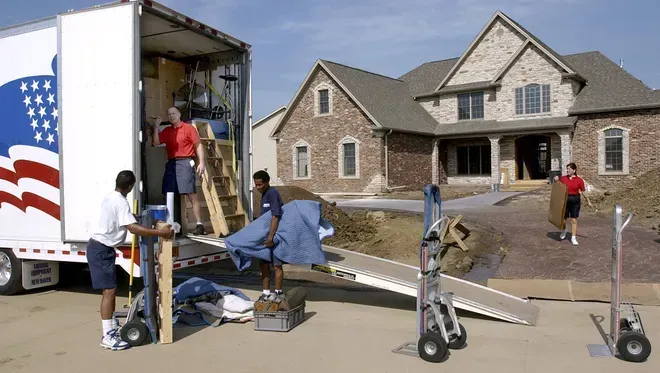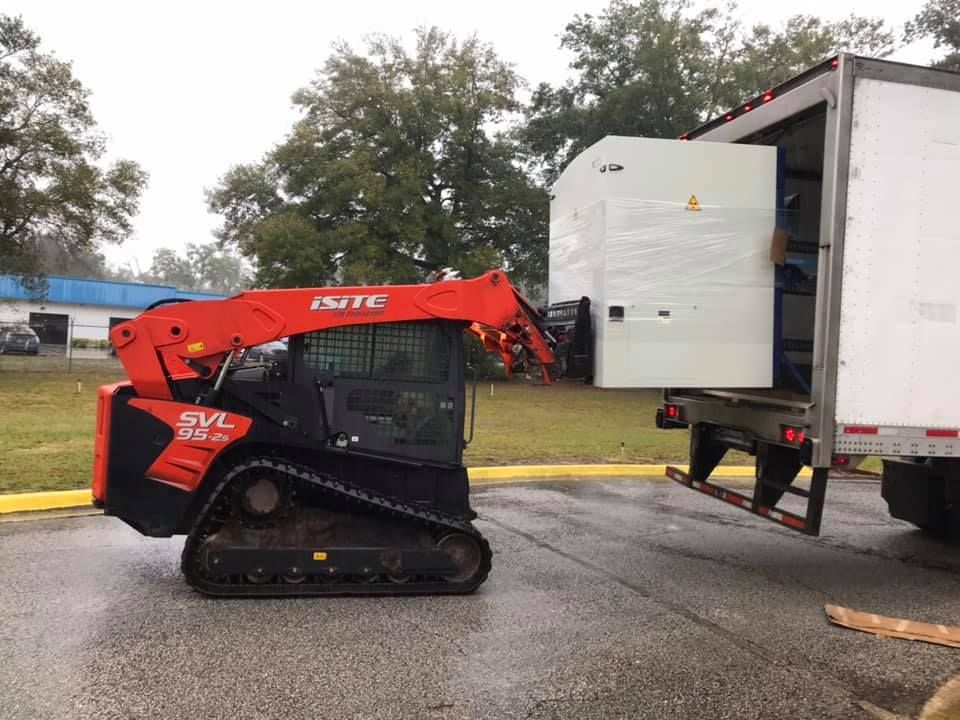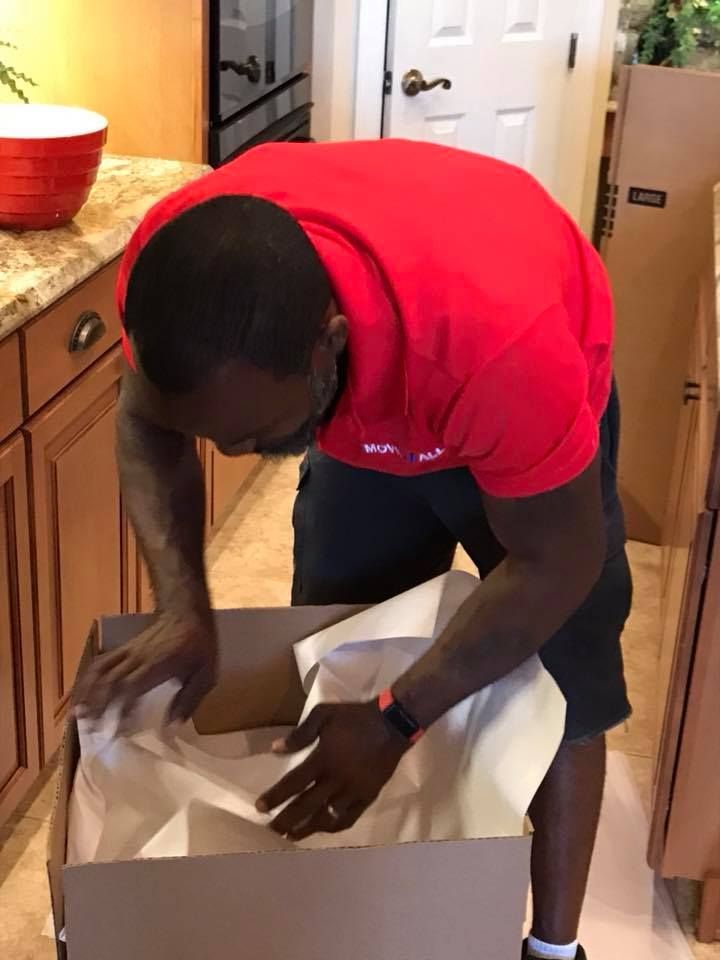BLOG
We Earned Their TRUST...
Now, Let Us Earn Yours!
Your Guide to Picking the Perfect Commercial Moving Company
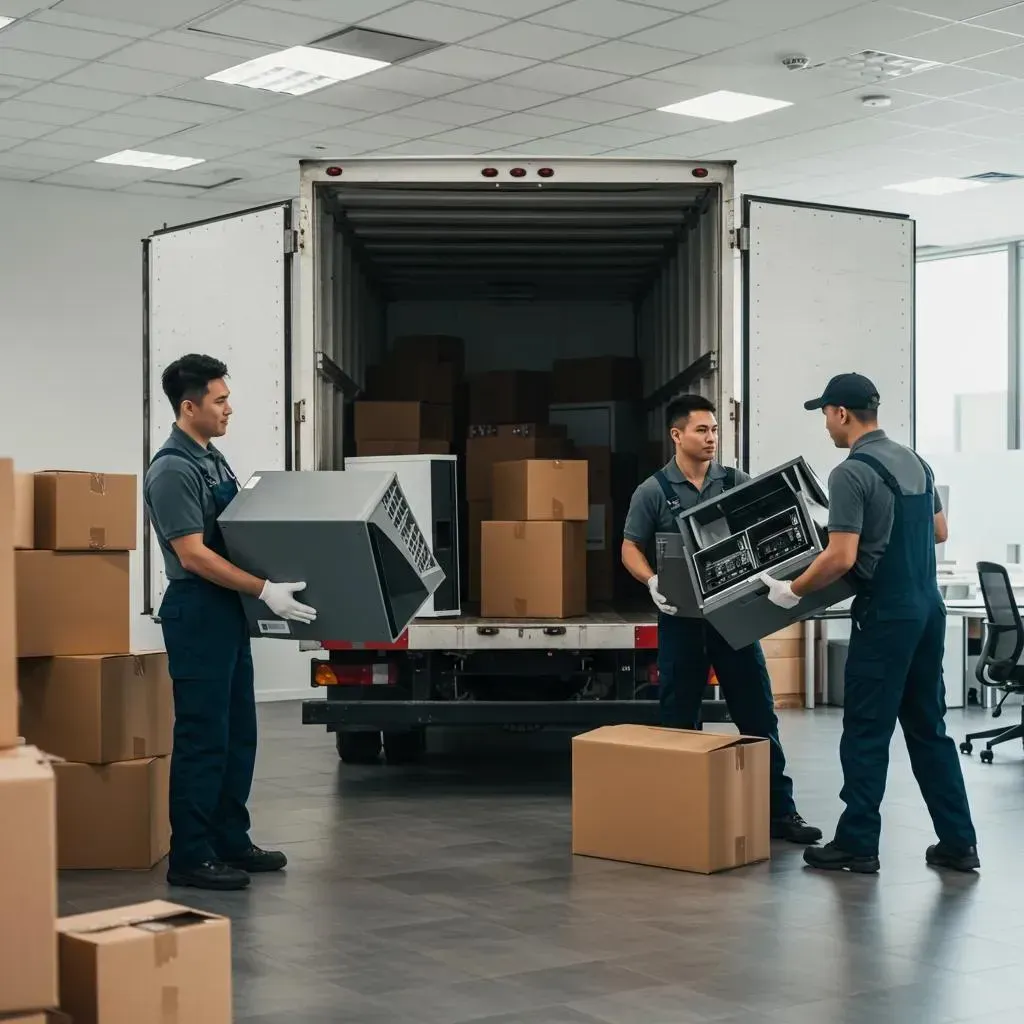
Selecting the right commercial moving company is a crucial step that directly impacts your business’s ability to keep running smoothly, safeguard your valuable assets, and minimize operational disruptions. This guide walks you through seven essential factors to consider when choosing commercial movers. We’ll cover everything from their experience and credentials (like licensing and insurance) to the breadth of their services, their reputation, how transparent their pricing is, their communication style, and the equipment they have at their disposal. By paying close attention to these points, you’ll be better equipped to reduce interruptions, confirm their legitimacy (including USDOT/MC registration and cargo insurance), and find movers whose capabilities match your industry’s unique demands, whether it’s an office move, a delicate medical equipment transfer, or a complex factory relocation. We’ll tackle common headaches like unexpected costs, damaged items, and extended downtime by providing clear verification steps, handy checklists, and decision-making frameworks to help you select a mover that delivers tangible results. This article breaks down each factor into practical actions: what questions to ask, what proof to request, and how to compare pricing models and service packages so you can confidently choose a licensed commercial mover. Keep reading for actionable checklists, easy-to-understand comparison tables, and real-world examples of how specialized movers handle challenging commercial relocations while keeping your business up and running.
What Kind of Experience and Expertise Should You Look For in a Commercial Moving Company?
When we talk about experience in commercial moving, we mean a proven history of successful relocations for businesses similar to yours, established processes for protecting your assets, and tested strategies for minimizing your business downtime. The real value of experience lies in repeatable, refined processes: specialized teams follow industry-specific protocols to safely dismantle, transport, and reassemble your equipment, leading to quicker recovery and fewer claims. The biggest advantage is predictable execution—companies with demonstrable expertise are less likely to make scheduling errors and are better at protecting your critical assets. To assess their experience, you’ll need to ask structured questions about their past projects and documented results, which we’ll detail in the following sections.
How Does Experience Specific to Your Industry Make a Difference in Your Business Move?
Experience tailored to your industry dictates specific handling procedures, necessary certifications, and the risk factors involved in a move. For instance, moving medical equipment requires climate control and certified technicians, while relocating IT racks demands meticulous cable labeling and static-safe handling. Experienced movers understand the nuances of different move types—like office moves, medical equipment relocations, and factory transfers—and adapt their packing and transport methods accordingly to minimize downtime and protect sensitive items. The outcome is measurable: fewer damaged items, faster service restoration, and shorter periods of business interruption when providers follow industry-specific playbooks. Ask potential movers for examples of projects they’ve completed in your sector and the specific steps they took to overcome industry-specific challenges, which will lead into the types of complex moves they’ve handled successfully.
Can You Share Examples of Complex Commercial Moves Handled Successfully?
Complex commercial moves can include relocating entire corporate offices across multiple floors, transferring sensitive hospital equipment, or moving heavy industrial machinery. Each of these presents unique logistical hurdles, such as coordinating elevator access, designing custom crating, or arranging for certified rigging. Successful movers document the challenges they faced, the solutions they implemented, and the final outcomes—detailing how they staged the move, protected assets, and coordinated with other vendors to keep operations running. For example, a case study from a Florida-based full-service mover illustrates how they managed coordinated overnight moves and provided special handling for heavy equipment, significantly reducing daytime disruption and meeting strict deadlines. When evaluating potential movers, ask for brief case studies that quantify their success in reducing downtime and preventing damage, allowing for an objective comparison of their capabilities.
Why Is a Proven Track Record So Important for Business Relocation?
A proven track record serves as concrete evidence that a mover’s processes work, even under pressure. It typically includes client references, detailed case studies, and measurable results like hours of downtime saved or damage rates. By requesting tangible proof—such as contactable references, documented timelines, and performance metrics—you can directly correlate their past success with the risk reduction you can expect for your project. Evaluating track records helps you distinguish between companies that rely on standardized, effective procedures and those that use more haphazard methods, a distinction that significantly impacts scheduling reliability and liability. Use these verification steps to narrow down your list to movers whose previous projects closely align with the scope and complexity of your own.
How Can You Confirm Licensing and Insurance for Commercial Movers?

Verifying licenses and insurance is crucial for ensuring legal compliance and securing financial protection in the event of loss or damage. These credentials establish regulatory oversight and provide third-party coverage to handle claims. The primary protections include licensing for interstate or intrastate operations and insurance that covers liability and cargo—together, they significantly minimize legal and financial risks. The practical benefit is straightforward: movers who are properly licensed and insured offer you remedies and recourse that safeguard your business assets and ensure continuity. The sections below provide specific items to check and a concise comparison to guide your verification process.
What Commercial Moving Licenses Should You Be Looking For?
Key licenses to request include federal registrations for interstate moves and state or local permits for intrastate moves. Ask for the mover’s USDOT/MC numbers for interstate logistics and confirm their state mover registration where applicable. Your verification actions should involve asking for the registration number, checking official government registries, and confirming the mover’s operating authority. These steps prove that the mover meets regulatory safety and operational standards. Always document the numbers you receive and insist that the mover includes them on your contract to ensure legal accountability. Confirming these credentials helps avoid regulatory surprises and directly ties into the insurance and claims processes we’ll discuss next.
What Types of Insurance Are in Place to Protect Your Business Assets?
Commercial moves commonly require general liability, cargo insurance, and potentially additional coverage like replacement value policies. Liability insurance covers third-party injuries or property damage, while cargo insurance protects against loss or damage to the goods being transported. Recommended actions include requesting copies of insurance certificates, noting the policy limits (e.g., coverage up to specific amounts), and asking the mover about their claims process. Understanding the available coverages helps you assess any remaining risk and decide if supplemental insurance is necessary for high-value items. Verifying insurance is a practical risk-management step that limits your financial exposure and supports a smoother claims resolution if damage occurs.
Intro: The following table provides a summary of the most relevant licenses and insurance types, where to verify them, and the specific customer actions or proof you should request. Use this easy-to-understand comparison to build your verification checklist.
| Credential Type | What It Covers / Where to Verify | Customer Action / Proof to Request |
|---|---|---|
| Federal Registration (USDOT/MC) | Operating authority for interstate transport; verify on federal registries | Request USDOT/MC number and copy of registration |
| State/Local Mover License | Intrastate compliance and local permitting | Ask for state mover license and verify with state agency |
| Cargo Insurance | Coverage for transported goods during transit | Request certificate of insurance with limits and policy number |
| General Liability | Third-party bodily or property damage | Request policy details and insurer contact for verification |
How Do Licensing and Insurance Help Minimize Risks During Your Move?
Licensing establishes a framework for legal recourse and operational standards, while insurance provides financial remedies when incidents occur. Together, they enable structured claim handling and minimize recovery time. When a mover is both licensed and adequately insured, disputes are handled through formal processes backed by documented policies and claims procedures, rather than ad hoc negotiations. To take full advantage of this protection, obtain and keep copies of all credentials in your project files and ensure insurance requirements are clearly stated in your contract. This approach reduces uncertainty and speeds up resolution in the event of damage or loss.
Which Comprehensive Services Should a Commercial Moving Company Offer?
Comprehensive commercial moving services encompass everything from initial planning and packing to specialized handling, transportation, setup, and post-move support. These integrated capabilities work together to reduce downtime and ensure the safety of your business assets. The value is created through integrated service delivery: a single provider manages disassembly, secure packing, climate-controlled transport, and reinstallation, streamlining timelines and reducing coordination overhead. The benefit is clear operational continuity—fewer vendors to manage, unified scheduling, and accountable service level agreements (SLAs) that restore productivity faster. The sections below break down the core service categories and what you should expect from a full-service commercial moving package.
What Packing and Unpacking Services Are Essential for Businesses?
Essential packing services range from complete packing and inventory management to fragile-item-only packing and on-site labeling systems. Inventory controls and professional packing materials are key to reducing loss and speeding up the unpacking process. Providers should offer systematic labeling, serialized inventory lists, and options for secure storage if staging is required. The result of professional packing is less damage, faster setup, and clearer accountability for items in transit. When you’re getting quotes, ask for sample inventory formats and details on packing level options so you can balance cost with the level of protection and speed you need.
How Are Specialized Equipment Like IT and Medical Devices Handled?
Handling specialized equipment involves certified technicians, custom crating, climate control, and precise reconnection procedures. IT racks and medical devices require specific protocols to protect sensitive electronics and maintain calibration. Movers should be able to describe their step-by-step handling process: inventory and imaging, secure crating, climate-controlled transport, and certified reconnection with testing. This ensures minimal downtime and prevents equipment damage. Ask movers about their partnerships with IT disconnect/reconnect specialists or medical equipment technicians and request documentation of their processes. Proper specialized handling significantly reduces the risk of operational delays and equipment failures after the move.
Intro: The table below maps different service types to their typical scope and the resulting business benefit or downtime impact, offering a quick, easy-to-understand reference to match your needs with desired outcomes.
| Service Type | Typical Scope | Business Benefit / Downtime Impact |
|---|---|---|
| Full Packing | Complete packing, labeling, inventory | Minimizes damage; speeds re-setup; lowers supervision time |
| IT Disconnect/Reconnect | Server and network rack handling, testing | Reduces network downtime; ensures quicker productivity resumption |
| Specialized Rigging | Heavy machinery rigging and transportation | Prevents equipment damage; avoids prolonged operational shutdown |
| Post-Move Setup | Furniture assembly, waste removal, staging | Faster workspace readiness; reduces incremental vendor coordination |
Integration mention: As a practical example of available solutions, MOVE IT ALL / Full Service Mover (MOVE IT ALL, LLC.) offers commercial moving as a core service, including packing, specialized equipment handling, and post-move support. Their full-service approach demonstrates how integrated offerings can shorten recovery time for businesses. Review their commercial moving options to see how their comprehensive coverage aligns with your project requirements.
What Post-Move Support and Setup Services Should You Expect?
Post-move services typically include unpacking, furniture assembly, IT reconnection verification, debris removal, and short-term storage if needed. These services are designed to accelerate your operational recovery. A well-structured post-move plan should outline responsibilities for each task, include acceptance checks, and schedule follow-up inspections to confirm functionality. Expect providers to offer SLAs for setup timelines and to provide documentation of completed tasks, which helps in promptly identifying any outstanding issues. Including post-move support in your initial contract ensures the mover allocates the necessary resources for timely completion and minimizes delayed productivity.
Why Are Reputation and Customer Reviews So Critical When Choosing Business Movers?

A mover’s reputation and customer reviews act as social proof of their ability to handle commercial complexities. They serve as indicators of reliability, communication effectiveness, and their history with claims. Reviews offer context on how consistently their processes work, while case studies reveal measurable performance metrics like downtime reduction and safe handling statistics. The benefit of carefully assessing a mover’s reputation is significant risk reduction: by prioritizing detailed, recent, and industry-relevant feedback, you increase the likelihood of selecting a mover that will perform as expected. The following sections explain how to effectively evaluate reviews and what to look for in testimonials and references.
How Can Online Reviews Help You Assess a Commercial Moving Company?
Online reviews are most helpful when you focus on recency, specificity, and commercial relevance. Look for mentions of similar-sized moves, the types of equipment handled, and scheduling accuracy, rather than generic praise. Credible reviews often include photos, timing details, and outcomes, providing valuable clues about a mover’s capabilities. Prioritize platforms that host verified reviews and cross-check customer comments against case studies or client lists to ensure consistency. By interpreting reviews in this manner, you can narrow your list to providers with a demonstrated track record in commercial moves.
What Should You Look for in Client Testimonials and Case Studies?
High-quality case studies typically present a challenge, the approach taken, the outcome, and key metrics such as hours of downtime avoided, damage rates, and adherence to timelines. These elements allow you to compare potential performance across different movers. Ask potential movers for case studies that closely resemble your project’s scale and request quantifiable benefits like reduced downtime or asset protection statistics. A strong testimonial will include the client’s name or industry, the project scope, and measurable results, all of which form a reliable basis for your selection. Use these case studies to establish performance benchmarks for your contract.
How Do References from Major Clients Influence Your Decision?
References from large or well-known clients indicate that a mover has met high standards and successfully navigated institutional procurement processes. However, confirmability is key—request contactable references rather than just a client list. When you receive references, ask structured questions about scheduling, communication, issue resolution, and how the mover minimized operational impact. Validating references in this way transforms client names into actionable assurance and informs your negotiations on service levels and potential penalties for missed SLAs. Confirmed experience with major clients is a strong indicator of a mover’s capacity to handle complex commercial relocations.
How Do Transparent Pricing and Accurate Estimates Affect Your Commercial Move?
Transparent pricing and accurate estimates are essential for aligning expectations, minimizing disputes, and enabling reliable budgeting. Accuracy is achieved through proper scoping, typically via an on-site evaluation, which uncovers hidden complexities that remote quotes often miss. The benefit is financial predictability and a reduced risk of surprise fees that can derail project budgets and timelines. This section explains the differences between pricing models, common hidden fees, and why on-site estimates are vital for accurate planning and minimizing downtime.
What Is the Difference Between Flat-Rate and Hourly Pricing Models?
Flat-rate pricing offers predictability: it bundles labor, basic materials, and estimated time into a single price based on the defined scope, making it ideal for larger, well-scoped moves. Hourly pricing provides flexibility for smaller or less defined scopes but can lead to higher costs if the move takes longer than anticipated. A hybrid model combines baseline flat fees with hourly charges for unpredictable tasks, balancing predictability with flexibility. Opt for flat-rate pricing for larger, well-documented moves and hourly or hybrid models for smaller or highly variable scopes.
- Flat-rate: Provides a predictable total cost when the scope is fully defined.
- Hourly: Offers flexible pricing but carries the risk of higher costs with longer durations.
- Hybrid: Combines predictability with flexibility, suitable for mixed-scope projects.
These decision guidelines will help you choose the best pricing model for your business size and complexity, reducing budgetary surprises and aligning incentives.
Intro: Compare common pricing models, what they typically include, and the scenarios where each is most appropriate using the following easy-to-understand table to help you avoid hidden fees and clarify expectations.
| Pricing Model | Inclusions / Exclusions | When Appropriate / Sample Cost Drivers |
|---|---|---|
| Flat-Rate | Typically includes labor, basic materials; may exclude specialty rigging | Best for large, well-scoped moves; cost driven by volume and complexity |
| Hourly | Charges for labor/time; may require minimums and exclude materials | Best for small moves or uncertain scopes; cost driven by duration |
| Hybrid | Flat baseline with hourly add-ons for unpredictables | Useful when part of the scope is fixed and part may vary |
How Can You Avoid Hidden Fees in Commercial Moving Quotes?
Hidden fees often arise from exclusions such as stairs, long carries, specialty rigging, or disposal services. Avoid them by requesting an itemized quote and asking specific clarifying questions about exclusions and change-order policies. Use a standardized checklist to ensure quotes include packing materials, labor components, specialized equipment, and post-move services, allowing for accurate apples-to-apples comparisons. Require movers to list potential surcharges and the conditions that trigger additional charges in writing to prevent disputes. Clear, itemized estimates support better planning and reduce the risk of last-minute cost escalations.
Why Are On-Site Estimates Important for Accurate Pricing?
On-site estimates allow a professional assessor to evaluate access issues, equipment constraints, and packing needs that remote estimates simply cannot capture. This process improves pricing precision by identifying variables like elevator reservations, stair carries, or route restrictions. The immediate benefit is a more accurate scope and a lower probability of change orders that increase costs and delay timelines. Some providers offer complimentary on-site flat-rate estimates for larger facilities, demonstrating their commitment to accurate scoping and transparent pricing. Insist on on-site evaluations for complex or larger moves to secure realistic pricing and scheduling.
Integration mention: For instance, MOVE IT ALL emphasizes transparent pricing and offers complimentary on-site flat-rate estimates for larger commercial projects, alongside competitive hourly rates for smaller moves. These policies highlight how on-site scoping and clear insurance limits contribute to predictable budgeting.
How Important Is Communication and Customer Service During a Commercial Move?
Clear communication and dedicated customer service are vital for reducing uncertainty and enabling rapid problem resolution during complex moves. A single point of contact coordinates scheduling, vendor interactions, and issue escalation. The key mechanism is centralized coordination: assigning a move coordinator who manages timelines, conducts check-ins, and documents issues, leading to faster decisions and fewer interruptions. The result is smoother execution, measurable reductions in downtime, and a clear path for dispute resolution if problems arise. The sections below explain the role of the coordinator, expected SLAs, and best practices for communication.
What Role Does a Dedicated Move Coordinator Play?
A move coordinator acts as the single point of contact responsible for planning, scheduling, vendor coordination, and client updates. This role consolidates communication and reduces the risk of misaligned tasks. Coordinators prepare timeline checklists, conduct pre-move site walkthroughs, and manage day-of logistics, ensuring stakeholders receive timely updates and that priorities are maintained. The coordinator’s oversight shortens decision loops and mitigates surprises that can otherwise extend downtime. Require a documented communication plan and a named coordinator to enhance accountability and execution accuracy.
How Should a Moving Company Handle Problem Resolution and Updates?
Effective problem resolution relies on predefined SLAs for response times, documented incident reporting, and clear escalation procedures. Providers should offer regular status reporting cadences and an incident workflow for promptly resolving issues. Acceptable SLAs typically include acknowledgement within a set timeframe and resolution timelines tied to the severity of the incident. Demand documented procedures for dispute resolution and proof of their prior incident handling to verify the mover’s responsiveness. Clear escalation paths and documented updates are crucial for preserving operational continuity and minimizing extended disruptions.
What Are the Benefits of Clear and Responsive Communication?
Clear communication significantly lowers the chance of scope creep and accelerates issue resolution, often leading to quantifiable reductions in downtime and rework. When providers maintain a predictable reporting rhythm, clients can coordinate their internal resources more effectively. Best practices include weekly planning calls, daily move-day check-ins, and post-move debriefs that document lessons learned. These practices support continuous improvement and ensure that subsequent moves are executed more efficiently. Establishing these expectations in the contract creates enforceable performance standards that protect your business continuity.
What Resources and Equipment Should a Reliable Commercial Moving Company Have?
Reliable commercial movers maintain a well-serviced fleet, specialized tools, and high-quality packing materials to ensure safe, timely transfers. These resources provide redundancy, mitigate the risk of breakdowns, and protect sensitive assets during transport. The mechanism of value is resource readiness: fleet capacity and specialized equipment like lifts, climate-controlled vans, and custom crating enable a provider to execute according to schedule and handle diverse loads. The benefit is reduced scheduling delays and a lower risk of damage, which translates to faster operational recovery. The sections below outline fleet considerations, essential tools, and why proper equipment handling is so important.
How Does Fleet Size and Maintenance Impact Your Move?
Fleet capacity and maintenance programs directly affect reliability and scheduling flexibility. A well-maintained fleet significantly reduces the risk of breakdowns, which can cause cascading delays. Ask providers about their backup resources, the typical age of their trucks, and their preventive maintenance practices to assess their contingency readiness. Having appropriately sized vehicles for your load mix ensures fewer trips and faster turnaround times, lowering overall downtime. Confirming fleet readiness and contingency plans helps you avoid logistical bottlenecks during your move.
What Specialized Tools and Packing Materials Are Necessary?
Essential tools include lifts, dollies, cranes or rigging for heavy machinery, custom crates, and climate-controlled transport for sensitive items. High-quality materials such as furniture pads, industrial-grade shrink wrap, and shock-absorbing packaging are crucial for reducing damage risk. The right combination of tools and materials preserves the condition of your assets and eases installation at the destination. Request a list of their materials and examples of protective methods used for high-value assets to verify the mover’s capabilities. Using quality materials and equipment reduces the likelihood of claims and accelerates post-move setup.
Why Is Proper Equipment Handling Vital for Business Assets?
Proper handling prevents costly damage to expensive assets and avoids prolonged downtime caused by repairs or recalibration. The financial cost of damaged equipment often far exceeds the incremental expense of professional handling. Best practices include certified rigging for heavy loads, static-safe procedures for electronics, and post-move functional testing for critical systems to confirm operational readiness. Ensure your mover includes specific handling protocols and verification steps in the contract to align incentives and protect your business continuity. Including these requirements upfront minimizes potential losses and supports a smoother operational transition.
Integration mention and CTA: For businesses in the Orlando area looking for a commercial moving partner that combines full-service capabilities with local expertise, MOVE IT ALL / Full Service Mover (MOVE IT ALL, LLC.) offers commercial moving services specifically designed for offices, restaurants, medical facilities, and industrial sites. They provide insurance coverage up to specified limits and offer complimentary on-site flat-rate estimates for larger projects. If you need a personalized commercial moving consultation or a quote that reflects thorough on-site scoping, consider requesting a consultation with an experienced commercial mover who can tailor services to your specific downtime and asset protection needs.
Frequently Asked Questions
What should I do if my commercial move encounters unexpected delays?
If your commercial move faces unexpected delays, your first step should be to communicate with your moving company. A reliable mover should have a dedicated move coordinator available to provide updates and manage any issues that arise. It’s essential to have a contingency plan in place, which might include temporary storage solutions or alternative arrangements for your operations. Document all communications and decisions made during this period to ensure clarity and accountability. Additionally, review your contract for any clauses related to delays and penalties to understand your rights and options.
How can I ensure my sensitive equipment is protected during the move?
To ensure your sensitive equipment is protected during a commercial move, choose a moving company that specializes in handling such items. Inquire about their specific protocols for packing, transporting, and setting up sensitive equipment, such as IT systems or medical devices. Make sure they use appropriate packing materials, like custom crates and climate-controlled transport, and that their staff includes certified technicians for reconnection. Request documentation of their handling procedures and any past experiences with similar equipment to verify their expertise in minimizing risks during the move.
What are the potential risks of hiring an unlicensed moving company?
Hiring an unlicensed moving company carries several significant risks, including potential legal liabilities, a lack of accountability, and inadequate insurance coverage. Unlicensed movers may not adhere to industry regulations, which can result in poor service quality and a higher likelihood of damage to your assets. Furthermore, if issues arise during the move, such as lost or damaged items, you may have limited recourse for filing claims. Always verify a mover's licensing and insurance before hiring them to ensure compliance with legal standards and to protect your business interests.
How can I assess the quality of customer service from a moving company?
To assess the quality of customer service from a moving company, begin by reading online reviews and testimonials from previous clients. Pay close attention to feedback regarding responsiveness, communication clarity, and effectiveness in problem resolution. Additionally, consider reaching out to the company directly with questions about their services; their promptness and clarity in responding can be very telling. Request references from past clients and ask specific questions about their experiences. A company that truly prioritizes customer service will be transparent and willing to provide the information you need to make an informed decision.
What should I include in my moving contract to protect my business?
To protect your business within a moving contract, ensure it includes detailed descriptions of all services, timelines, and pricing structures. Clearly specify the responsibilities of both parties, including liability for damages and the scope of insurance coverage. Include clauses for dispute resolution, penalties for missed deadlines, and conditions for any changes in the scope of work. Additionally, request documented proof of all licenses and insurance policies. A comprehensive contract is essential for mitigating risks and establishing a clear framework for accountability throughout the entire moving process.
What are the benefits of using a full-service moving company?
Opting for a full-service moving company offers numerous advantages, including streamlined logistics, minimized downtime, and comprehensive support throughout the entire moving process. Full-service movers manage all aspects, from packing and transportation to setup and post-move assistance, allowing your team to concentrate on core business activities. Their expertise in specialized handling ensures that sensitive equipment is protected, while their extensive resources can efficiently manage complex moves. Furthermore, full-service companies typically provide robust insurance coverage, offering you peace of mind during the transition.
How can I prepare my employees for a commercial move?
Preparing your employees for a commercial move involves clear communication and thorough planning. Start by informing them about the move well in advance, outlining the timeline and their specific roles in the process. Provide guidance on packing their personal items and any necessary procedures for handling sensitive equipment. Encourage open dialogue to address any concerns or questions they may have. Additionally, consider organizing a team meeting to discuss logistics and expectations, ensuring everyone is aligned and understands how to minimize disruptions during the transition.
Conclusion
Selecting the right commercial moving company is absolutely vital for maintaining business continuity, safeguarding your assets, and minimizing operational downtime. By carefully considering key factors like experience, licensing, and the comprehensiveness of their services, you can make a well-informed decision that perfectly matches your specific business needs. Take the next step toward a seamless relocation by exploring our range of trusted commercial moving services, all tailored to your business requirements. Contact us today for a personalized consultation, and let us help you achieve a smooth and successful transition.
